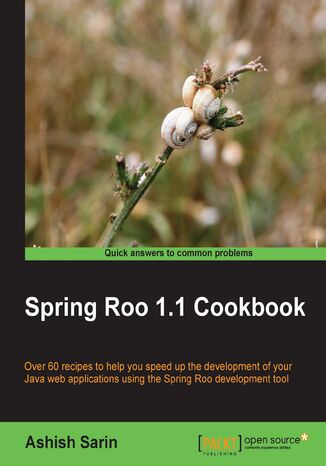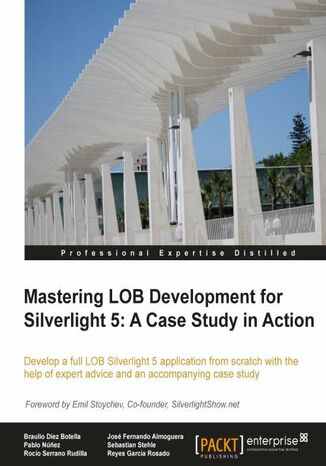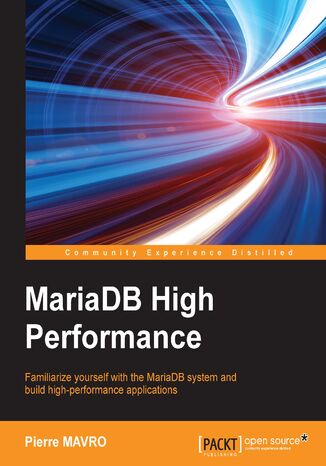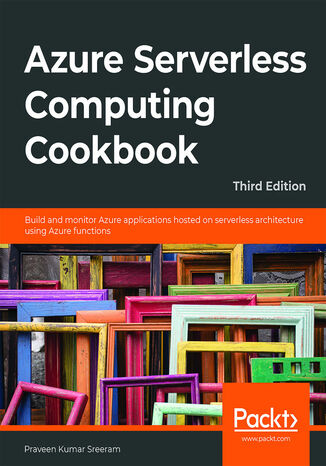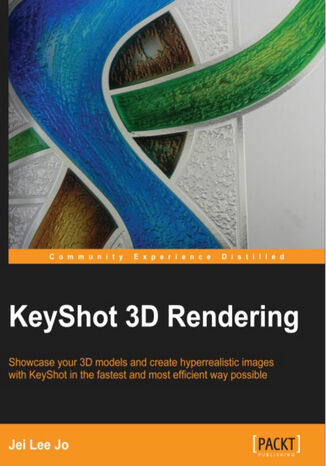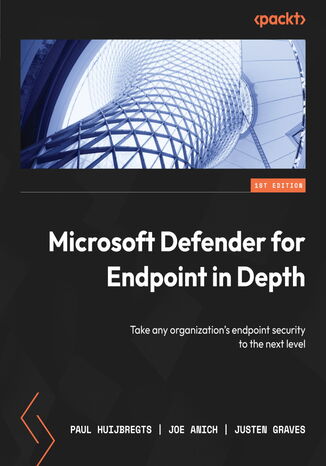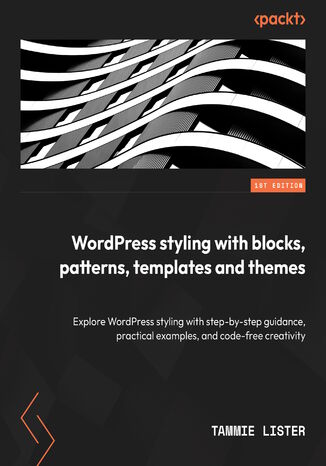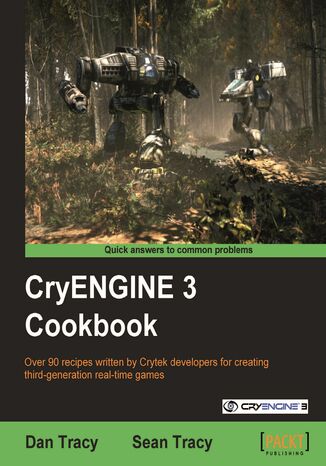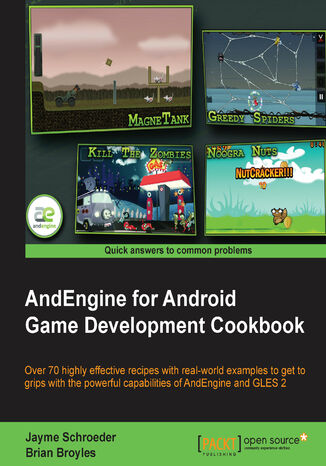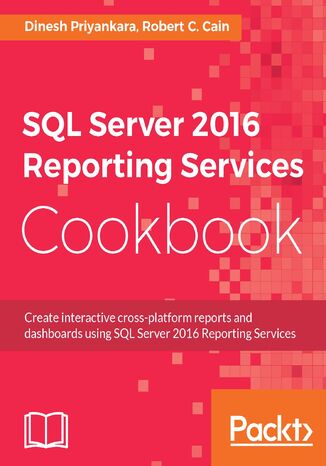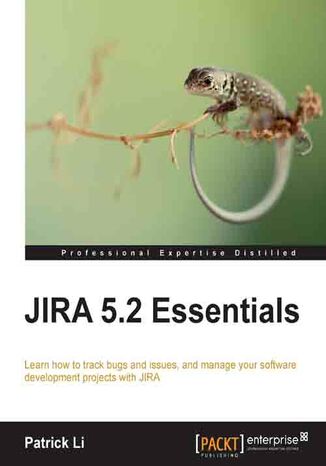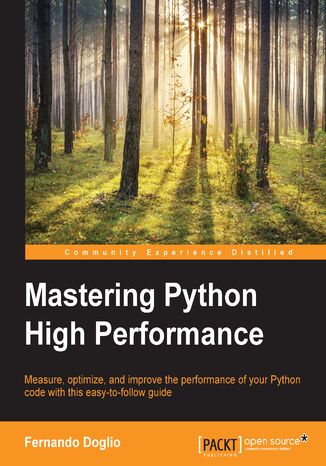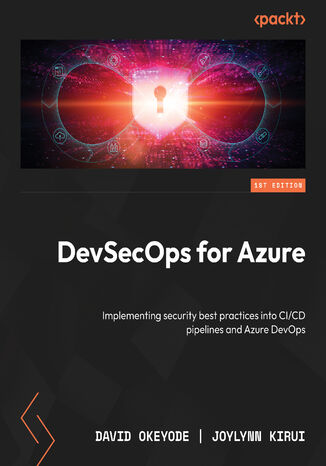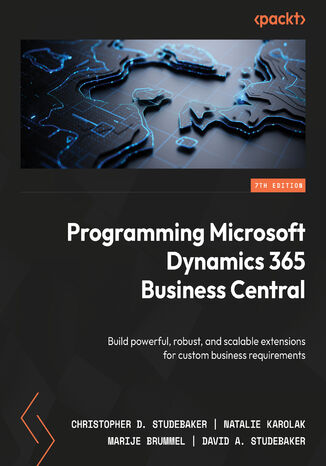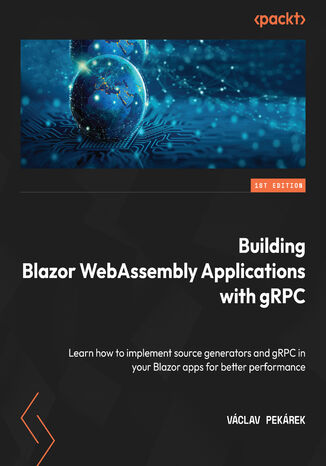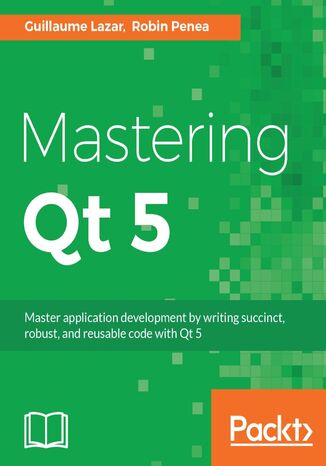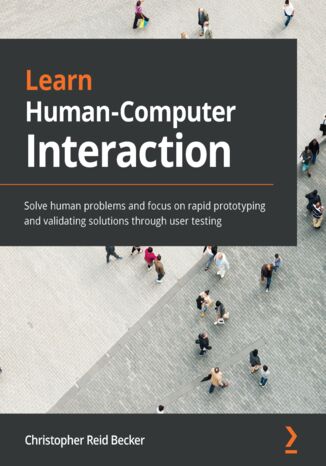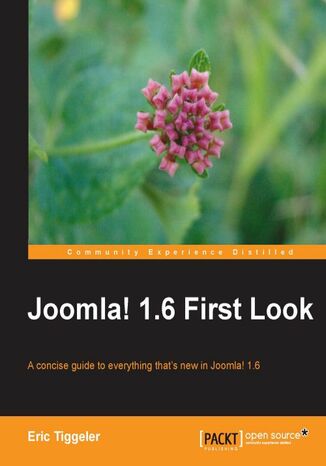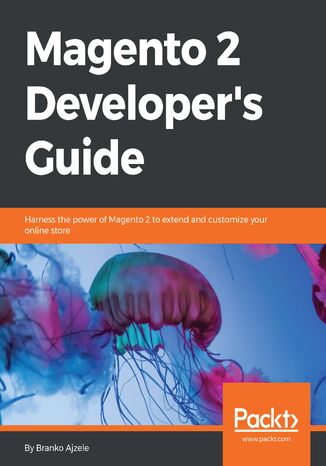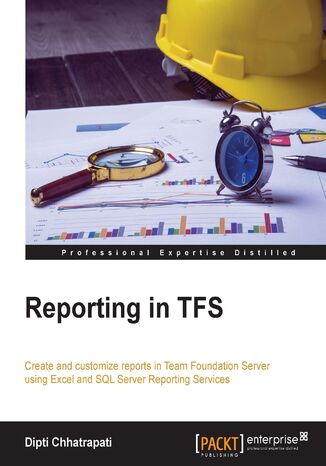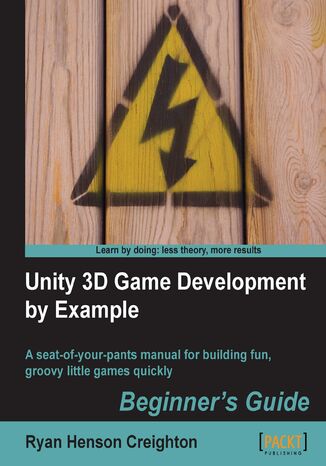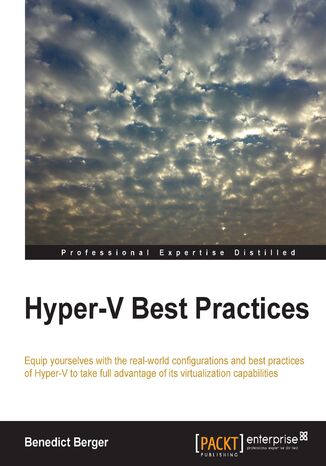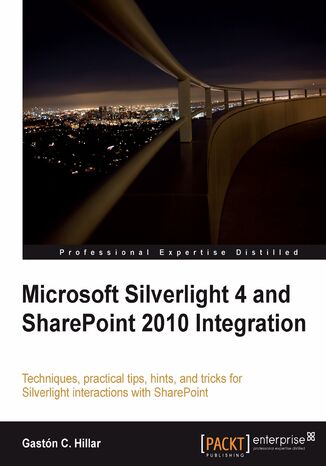Categories
-
- Bitcoin
- Businesswoman
- Coaching
- Controlling
- E-business
- Economy
- Finances
- Stocks and investments
- Personal competence
- Computer in the office
- Communication and negotiation
- Small company
- Marketing
- Motivation
- Multimedia trainings
- Real estate
- Persuasion and NLP
- Taxes
- Social policy
- Guides
- Presentations
- Leadership
- Public Relation
- Reports, analyses
- Secret
- Social Media
- Sales
- Start-up
- Your career
- Management
- Project management
- Human Resources
-
- Architektura i wnętrza
- Health and Safety
- Biznes i Ekonomia
- Home and garden
- E-business
- Ekonomia i finanse
- Esoterecism
- Finances
- Personal finance
- Business
- Photography
- Computer science
- HR & Payroll
- For women
- Computers, Excel
- Accounts
- Culture and literature
- Scientific and academic
- Environmental protection
- Opinion-forming
- Education
- Taxes
- Travelling
- Psychology
- Religion
- Agriculture
- Book and press market
- Transport and Spedition
- Healthand beauty
-
- Office applications
- Data bases
- Bioinformatics
- IT business
- CAD/CAM
- Digital Lifestyle
- DTP
- Electronics
- Digital photography
- Computer graphics
- Games
- Hacking
- Hardware
- IT w ekonomii
- Scientific software package
- School textbooks
- Computer basics
- Programming
- Mobile programming
- Internet servers
- Computer networks
- Start-up
- Operational systems
- Artificial intelligence
- Technology for children
- Webmastering
-
- Antology
- Ballade
- Biographies and autobiographies
- For adults
- Dramas
- Diaries, memoirs, letters
- Epic, epopee
- Essay
- Fantasy and science fiction
- Feuilletons
- Work of fiction
- Humour and satire
- Other
- Classical
- Crime fiction
- Non-fiction
- Fiction
- Mity i legendy
- Nobelists
- Novellas
- Moral
- Okultyzm i magia
- Short stories
- Memoirs
- Travelling
- Narrative poetry
- Poetry
- Politics
- Popular science
- Novel
- Historical novel
- Prose
- Adventure
- Journalism, publicism
- Reportage novels
- Romans i literatura obyczajowa
- Sensational
- Thriller, Horror
- Interviews and memoirs
-
- Archeology
- Bibliotekoznawstwo
- Cinema studies
- Philology
- Polish philology
- Philosophy
- Finanse i bankowość
- Geography
- Economy
- Trade. World economy
- History and archeology
- History of art and architecture
- Cultural studies
- Linguistics
- Literary studies
- Logistics
- Maths
- Medicine
- Humanities
- Pedagogy
- Educational aids
- Popular science
- Other
- Psychology
- Sociology
- Theatre studies
- Theology
- Economic theories and teachings
- Transport i spedycja
- Physical education
- Zarządzanie i marketing
-
- Health and Safety
- History
- Road Code. Driving license
- Law studies
- Healthcare
- General. Compendium of knowledge
- Academic textbooks
- Other
- Construction and local law
- Civil law
- Financial law
- Economic law
- Economic and trade law
- Criminal law
- Criminal law. Criminal offenses. Criminology
- International law
- International law
- Health care law
- Educational law
- Tax law
- Labor and social security law
- Public, constitutional and administrative law
- Family and Guardianship Code
- agricultural law
- Social law, labour law
- European Union law
- Industry
- Agricultural and environmental
- Dictionaries and encyclopedia
- Public procurement
- Management
-
- Africa
- Albums
- Southern America
- North and Central America
- Australia, New Zealand, Oceania
- Austria
- Asia
- Balkans
- Middle East
- Bulgary
- China
- Croatia
- The Czech Republic
- Denmark
- Egipt
- Estonia
- Europe
- France
- Mountains
- Greece
- Spain
- Holand
- Iceland
- Lithuania
- Latvia
- Mapy, Plany miast, Atlasy
- Mini travel guides
- Germany
- Norway
- Active travelling
- Poland
- Portugal
- Other
- Przewodniki po hotelach i restauracjach
- Russia
- Romania
- Slovakia
- Slovenia
- Switzerland
- Sweden
- World
- Turkey
- Ukraine
- Hungary
- Great Britain
- Italy
-
- Philosophy of life
- Kompetencje psychospołeczne
- Interpersonal communication
- Mindfulness
- General
- Persuasion and NLP
- Academic psychology
- Psychology of soul and mind
- Work psychology
- Relacje i związki
- Parenting and children psychology
- Problem solving
- Intellectual growth
- Secret
- Sexapeal
- Seduction
- Appearance and image
- Philosophy of life
-
- Bitcoin
- Businesswoman
- Coaching
- Controlling
- E-business
- Economy
- Finances
- Stocks and investments
- Personal competence
- Communication and negotiation
- Small company
- Marketing
- Motivation
- Real estate
- Persuasion and NLP
- Taxes
- Social policy
- Guides
- Presentations
- Leadership
- Public Relation
- Secret
- Social Media
- Sales
- Start-up
- Your career
- Management
- Project management
- Human Resources
-
- Antology
- Ballade
- Biographies and autobiographies
- For adults
- Dramas
- Diaries, memoirs, letters
- Epic, epopee
- Essay
- Fantasy and science fiction
- Feuilletons
- Work of fiction
- Humour and satire
- Other
- Classical
- Crime fiction
- Non-fiction
- Fiction
- Mity i legendy
- Nobelists
- Novellas
- Moral
- Okultyzm i magia
- Short stories
- Memoirs
- Travelling
- Poetry
- Politics
- Popular science
- Novel
- Historical novel
- Prose
- Adventure
- Journalism, publicism
- Reportage novels
- Romans i literatura obyczajowa
- Sensational
- Thriller, Horror
- Interviews and memoirs
-
- Philosophy of life
- Interpersonal communication
- Mindfulness
- General
- Persuasion and NLP
- Academic psychology
- Psychology of soul and mind
- Work psychology
- Relacje i związki
- Parenting and children psychology
- Problem solving
- Intellectual growth
- Secret
- Sexapeal
- Seduction
- Appearance and image
- Philosophy of life
Ashish Sarin, Ashish Kumar Sarin, Brian Fitzpatrick
Spring Roo is an easy-to-use productivity tool for rapidly developing Java enterprise applications using well-recognized frameworks such as Spring, Hibernate, AspectJ, Spring Web Flow, Spring Security, GWT, and so on. Spring Roo takes care of creating maven-enabled projects, enterprise application architecture based on your choice of technologies, unit/integration tests based on your choice of testing framework, and so on. The bottom line is that if you're using Spring, then you must consider using Spring Roo for increased productivity.Spring Roo 1.1 Cookbook brings together a collection of recipes that demonstrate how the Spring Roo developer tool simplifies rapidly developing enterprise applications using standard technologies/frameworks such as JPA, GWT, Spring, Flex, Spring Web Flow, Spring Security, and so on. It introduces readers to developing enterprise applications for the real world using Spring Roo tool. The book starts off with basic recipes to make readers comfortable with using Spring Roo tool. As the book progresses, readers are introduced to more sophisticated features supported by Spring Roo in the context of a Flight Booking application. In a step-by-step by fashion, each recipe shows how a particular activity is performed, what Spring Roo does when a command is executed, and why it is important in the context of the application being developed.Initially, you make a quick start with using Spring Roo through some simple recipes. Then you learn how Spring Roo simplifies creating the persistence layer of an enterprise application using JPA. You are introduced to the various roo commands to create JPA entities, create relationships between JPA entities, create integration tests using Spring TestContext framework, and so on. Following this, the book shows you how Spring Roo simplifies creating the web layer of an enterprise application using Spring Web MVC, Spring Web Flow, and how to create selenium tests for controller objects.Subsequently, we focus on using Spring-BlazeDS, GWT, JSON, and so on. Spring Roo commands that are used to incorporate e-mail/messaging features into an enterprise application are demonstrated next. Finally, we wrap it up with some miscellaneous recipes that show how to extend Spring Roo via add-ons, incorporate security, create cloud-ready applications, remove Spring Roo from your enterprise application, and so on.
Jose Fernando Almoguera, Reyes Garc?É!!=a Rosado, Sebastian Stehle, Pablo N?É!??É!+-ez Navarro, ...
Microsoft Silverlight is fully established as a powerful tool for creating and delivering Rich Internet Applications and media experiences on the Web. This book will help you dive straight into utilizing Silverlight 5, which now more than ever is a top choice in the Enterprise for building Business Applications. Mastering LOB Development for Silverlight 5: A Case Study in Action focuses on the development of a complete Silverlight 5 LOB application, helping you to take advantage of the powerful features available along with expert advice. Fully focused on LOB development, this expert guide takes you from the beginning of designing and implementing a Silverlight 5 LOB application, all the way through to completion. Accompanied by a gradually built upon case study, you will learn about data access via RIA and Web services, architecture with MEF and MVVM applied to LOB development, testing and error control, and much more.With Mastering LOB Development for Silverlight 5: A Case Study in Action in hand, you will be fully equipped to expertly develop your own Silverlight Line of Business application, without dwelling on the basics of Enterprise Silverlight development.
This third edition of Azure Serverless Computing Cookbook guides you through the development of a basic back-end web API that performs simple operations, helping you understand how to persist data in Azure Storage services. You'll cover the integration of Azure Functions with other cloud services, such as notifications (SendGrid and Twilio), Cognitive Services (computer vision), and Logic Apps, to build simple workflow-based applications.With the help of this book, you'll be able to leverage Visual Studio tools to develop, build, test, and deploy Azure functions quickly. It also covers a variety of tools and methods for testing the functionality of Azure functions locally in the developer's workstation and in the cloud environment. Once you're familiar with the core features, you'll explore advanced concepts such as durable functions, starting with a hello world example, and learn about the scalable bulk upload use case, which uses durable function patterns, function chaining, and fan-out/fan-in.By the end of this Azure book, you'll have gained the knowledge and practical experience needed to be able to create and deploy Azure applications on serverless architectures efficiently.
Creating realistic images has been always a meticulous process where setting up the stage is a long and complicated task. KeyShot has simplified this process by allowing us to have a greater amount of control and flexibility in all aspects of the rendering procedure.KeyShot 3D Rendering provides a series of exercises with a detailed explanation of each part of the pipeline, from importing our model, to texturing, lighting, and rendering. In addition, the book covers in detail how to use all the necessary parameters inside KeyShot and also explains alternative methods to showcase your work.KeyShot 3D Rendering starts with covering all the basic principles and fundamentals of how to work and navigate in KeyShot. Throughout the book, there will be exercises that will guide and help you to complete the chapter's assignment. Also there will be an explanation of all the terms and parameters used in the exercises.You will learn how to use HDRIs (High Dynamic Range Images) as the primary source for lighting and also how to incorporate backplate images into a scene. You will learn how to create your own materials, textures, and labels. Lastly this book covers camera functions, real-time settings to improve the workflow of your assignments, and also rendering properties.The exercises in the book will provide you with all the tools necessary to bring your models to life and set up your own environment. You will learn how to adjust overall properties accordingly to maximize rendering output.
Paul Huijbregts, Joe Anich, Justen Graves
With all organizational data and trade secrets being digitized, the threat of data compromise, unauthorized access, and cyberattacks has increased exponentially. Microsoft Defender for Endpoint (MDE) is a market-leading cross-platform endpoint security solution that enables you to prevent, detect, investigate, and respond to threats. MDE helps strengthen the security posture of your organization.This book starts with a history of the product and a primer on its various features. From prevention to attack surface reduction, detection, and response, you’ll learn about the features, their applicability, common misconceptions, and caveats. After planning, preparation, deployment, and configuration toward successful implementation, you’ll be taken through a day in the life of a security analyst working with the product. You’ll uncover common issues, techniques, and tools used for troubleshooting along with answers to some of the most common challenges cybersecurity professionals face. Finally, the book will wrap up with a reference guide with tips and tricks to maintain a strong cybersecurity posture.By the end of the book, you’ll have a deep understanding of Microsoft Defender for Endpoint and be well equipped to keep your organization safe from different forms of cyber threats.
Experience a revolutionary WordPress styling transformation with WordPress Styling with Blocks, Patterns, Templates, and Themes by uncovering a wealth of features that redefine the future of WordPress. This guide introduces you to full-site editing and block design tools that enable you to shape the overall aesthetics and layout of your dream website with unprecedented ease.Get ready to harness the power of diverse cutting-edge features as you delve into this WordPress book, focusing on the Gutenberg editing experience. Guided by examples that demonstrate effortless customization entirely suited to your preferences, you’ll master the design tools, patterns, and full site editing capabilities to shape impactful websites that mirror your distinct vision and creativity. As you immerse yourself in the core of WordPress styling, you’ll understand the rationale and terminology underpinning each element and how to use it to its full potential.By the end of this book, you'll be equipped to build your dream website, reflecting your distinctive style.
Sean Tracy, Dan Tracy, Sean P Tracy (USD)
With every successive console generation, the cost, time, and complexity of developing games has grown. Meet CryENGINE3, a middleware engine that is the perfect fit for most developers allowing users to exceed current generation quality standards while using less people and time than ever thought possible.The CryENGINE3 CookBook is packed full of recipes for junior and senior developers alike. It covers everything from creating photo realistic architectural visualizations to implementing advanced physics such as ragdoll and tornado effects. Topics covered include the sandbox, level layout, environment creation, AI, character creation, creating vehicles, and game logic. Every recipe is designed to add AAA quality to your games. The CryENGINE3 SDK has many tools immediately available to developers of all disciplines. For designers the book has recipes for building up your own levels and populating your levels with intelligent AI and photo realistic assets. For artists we have recipes for practical workflow tools and techniques used when working with the advanced CryENGINE shaders and materials. For animators we have recipes that will bring your creations to life using skinned characters and advanced animation systems like locomotion groups. Finally for programmers we have recipes that show how to employ the core mechanics behind entities such as vehicles and weapons while also utilizing the strengths of the physics engine to create a unique and exciting game.
Nicolas Gramlich, JAYME SCHROEDER, Brian Boyles
AndEngine is a broad 2D game engine which allows game developers, both experienced and inexperienced, to develop games for the Android platform with ease. Don't be fooled by the simplicity, though. As easy as it is to “pick up and go,” AndEngine includes enough functionality to bring any type of 2D game world to life.The AndEngine for Android Game Development Cookbook contains all of the necessary information and examples in order to build the games as you imagine them. The book's recipes will walk you through the various aspects of game design with AndEngine and provides detailed instructions on how to achieve some of the most desirable effects for your games.The AndEngine for Android Game Development Cookbook begins with detailed information on some of the more useful structuring techniques in game design and general aspects of resource management. Continuing on, the book will begin to discuss AndEngine entities, including sprites, text, meshes, and more. Everything from positioning, to modifiers, and even tips on improving entity functionality with raw OpenGL capabilities. From here on, everything from applying physics to your game, working with multi-touch events and gestures, game optimization, and even an overview of the various AndEngine extensions will be covered.The book has a widerange of recipes, from saving and loading game data, applying parallax backgrounds to create a seemingly 3D world, relying on touch events to zoom the game camera, taking screen-shots of the device's screen, and performance optimization using object pools. If physics-based games are more interesting to you, there's also a list of recipes ranging from controlling the world forces and calculating forces applied to bodies, creating destructible objects, and even creating rag-dolls.Pong styled games were fun 35 years ago, but it is time to take your game to the next level with the AndEngine for Android Game Development Cookbook.
Dinesh Priyankara, Robert Cain
Microsoft SQL Server 2016 Reporting Services comes with many new features. It offers different types of reporting such as Production, Ad-hoc, Dashboard, Mash-up, and Analytical. SQL Server 2016 also has a surfeit of new features including Mobile Reporting, and Power BI integration.This book contains recipes that explore the new and advanced features added to SQL Server 2016. The first few chapters cover recipes on configuring components and how to explore these new features. You’ll learn to build your own reporting solution with data tools and report builder, along with learning techniques to create visually appealing reports. This book also has recipes for enhanced mobile reporting solutions, accessing these solutions effectively, and delivering interactive business intelligence solutions. Towards the end of the book, you’ll get to grips with running reporting services in SharePoint integrated mode and be able to administer, monitor, and secure your reporting solution. This book covers about the new offerings of Microsoft SQL Server 2016 Reporting Services in comprehensive detail and uses examples of real-world problem-solving business scenarios.
Atlassian's JIRA provides issue tracking and project tracking for software development teams to aid speed of development and quality of code. This book will show you how to develop software more efficiently by planning, designing, and customizing your own JIRA implementation.JIRA is a popular issue tracking product designed for better bug tracking, issue tracking, and project management. JIRA 5.2 Essentials provides a comprehensive guide covering everything you will need to plan, set up, design, customize, and manage your software development projects efficiently and to a professional standard.In this practical book you will learn how to design and implement JIRA for project and issue tracking. You will jump into the installation and design of JIRA before going through the required techniques to effectively manage issues that threaten your software development project.Each chapter builds on the last, taking you through important concepts and techniques such as business processes and workflows, setting up e-mail notifications, field and screen management, and reporting. Using these techniques you will be able to make JIRA adapt to your organization and save time and energy by developing software more efficiently.Newly improved and updated to JIRA 5.2 this book also includes a section about GreenHopper and Agile development with JIRA.
DevSecOps for Azure. End-to-end supply chain security for GitHub, Azure DevOps, and the Azure cloud
David Okeyode, Joylynn Kirui, Scott Hanselman
Businesses must prioritize security, especially when working in the constantly evolving Azure cloud. However, many organizations struggle to maintain security and compliance. Attackers are increasingly targeting software development processes, making software supply chain security crucial. This includes source control systems, build systems, CI/CD platforms, and various artifacts. With the help of this book, you’ll be able to enhance security and compliance in Azure software development processes.Starting with an overview of DevOps and its relationship with Agile methodologies and cloud computing, you'll gain a solid foundation in DevSecOps principles. The book then delves into the security challenges specific to DevOps workflows and how to address them effectively. You'll learn how to implement security measures in the planning phase, including threat modeling and secure coding practices. You'll also explore pre-commit security controls, source control security, and the integration of various security tools in the build and test phases. The book covers crucial aspects of securing the release and deploy phases, focusing on artifact integrity, infrastructure as code security, and runtime protection.By the end of this book, you’ll have the knowledge and skills to implement a secure code-to-cloud process for the Azure cloud.
Marije Brummel, Natalie Karolak, Christopher D. Studebaker, David Studebaker
Business Central opens a world of endless possibilities for custom business logic and functionality through extensions and customizations. For beginners in the AL language, navigating the vast landscape can feel overwhelming. It’s challenging to know where to start and what’s essential to learn. This updated edition offers a concise and well-organized guide, featuring hands-on exercises to support a successful learning journey.You’ll get to grips with the basics of Business Central and how to create your first Visual Studio Code project with the AL language. As you learn about the table data structure, simple and complex data types, relationships, validation, and data flow, you’ll be able to add and extend tables to your project. Progressively, you'll uncover the intricacies of user interfaces with pages, create advanced Excel report layouts, and harness the power of data queries. Immersing yourself in the AL language syntax, you’ll start with variables, methods, procedures, and statements. You'll explore advanced topics to create business logic such as FlowFields, filtering, CRUD methods, interactions between object types, and different API interfaces that can be created using the AL language.By the end of this book, you’ll be equipped to build fully featured, robust extensions and custom capabilities for Business Central.
Building Blazor WebAssembly Applications with gRPC will take you to the next level in your web development career. After working through all the essentials of gRPC, Blazor, and source generators, you will be far from a beginner C# developer and would qualify as a developer with intermediate knowledge of the Blazor ecosystem.After a quick primer on the basics of Blazor technology, REST, gRPC, and source generators, you’ll dive straight into building Blazor WASM applications. You’ll learn about everything from two-way bindings and Razor syntax to project setup. The practical emphasis continues throughout the book as you steam through creating data repositories, working with REST, and building and registering gRPC services. The chapters also cover how to manage source generators, C# and debugging best practices, and more. There is no shorter path than this book to solidify your gRPC-enabled web development knowledge.By the end of this book, your knowledge of building Blazor applications with one of the most modern and powerful frameworks around will equip you with a highly sought-after skill set that you can leverage in the best way possible.
Mastering Qt 5. Create stunning cross-platform applications
Qt 5.7 is an application development framework that provides a great user experience and develops full-capability applications with Qt Widgets, QML, and even Qt 3D.This book will address challenges in successfully developing cross-platform applications with the Qt framework. Cross-platform development needs a well-organized project. Using this book, you will have a better understanding of the Qt framework and the tools to resolve serious issues such as linking, debugging, and multithreading. Your journey will start with the new Qt 5 features. Then you will explore different platforms and learn to tame them. Every chapter along the way is a logical step that you must take to master Qt. The journey will end in an application that has been tested and is ready to be shipped.
Human-Computer Interaction (HCI) is a field of study that researches, designs, and develops software solutions that solve human problems. This book will help you understand various aspects of the software development phase, from planning and data gathering through to the design and development of software solutions. The book guides you through implementing methodologies that will help you build robust software.You will perform data gathering, evaluate user data, and execute data analysis and interpretation techniques. You’ll also understand why human-centered methodologies are successful in software development, and learn how to build effective software solutions through practical research processes. The book will even show you how to translate your human understanding into software solutions through validation methods and rapid prototyping leading to usability testing. Later, you will understand how to use effective storytelling to convey the key aspects of your software to users. Throughout the book, you will learn the key concepts with the help of historical figures, best practices, and references to common challenges faced in the software industry.By the end of this book, you will be well-versed with HCI strategies and methodologies to design effective user interfaces.
Wearable circuits add interaction and purpose to clothing and other wearable devices that are currently widely used in medical, social, safety, entertainment, and sports fields. To develop useful and impressive prototypes and wearables, you’ll need to be skilled in designing electronic circuits and working with wearable technologies.This book takes you on an interesting journey through wearable technology, starting from electronic circuits, materials, and e-textile toolkits to using Arduino, which includes a variety of sensors, outputs, actuators, and microcontrollers such as Gemma M0 and ESP32. As you progress, you’ll be carefully guided through creating an advanced IoT project. You’ll learn by doing and create wearables with the help of practical examples and exercises. Later chapters will show you how to develop a hyper-body wearable and solder and sew circuits. Finally, you’ll discover how to build a culture-driven wearable to track data and provide feedback using a Design Innovation approach.After reading this book, you’ll be able to design interactive prototypes and sew, solder, and program your own Arduino-based wearable devices with a purpose.
Joomla! 1.6 First Look. A concise guide to everything that's new in Joomla! 1.6
Release of the much awaited Joomla! 1.6 is just round the corner. There is a lot of hype and curiosity about the new features Joomla! 1.6 will provide and how it will affect existing users.Joomla! 1.6 First Look is a concise guide to the new features of Joomla! 1.6, targeted at existing Joomla! users and developers. If you want to see what's new in Joomla 1.6 and how it's going to affect you, this is the book for you. This book will give readers an insight into the new features of Joomla! 1.6, showing them what has changed, how the changes will affect them, and how to upgrade to Joomla! 1.6 from existing Joomla! versions. It begins with general changes in interface and basic articles, and then takes you through the changes in menus, control levels, templates, extensions, and SEO features. It explains the new features and how to use them, drawing attention to significant differences from how things used to behave. By the end of this book, you will be well-versed with the consequences these changes will bring to you as a Joomla! user or developer.
Magento is one of the most exciting, flexible, and customizable e-commerce systems. It offers you an extensive suite of powerful tools for creating and managing an online store. After years of development, Magento 2 introduces itself with a strong emphasis on modularity, Web API's, automated testing and overall new technology stack platform.The long-awaited Magento 2 release introduces a whole new e-commerce platform to develop online stores. The all new Magento 2 architecture, Web APIs, and a host of other features are equally challenging to master as much as they are exciting to use.Tshis book will ease the learning curve by offering step-by-step guidance on how to extend the core functionality of your Magento 2 store.This book is your one-stop guide to build and customize a quality e-commerce website from the latest version of one of the largest, fastest growing, and most popular e-commerce platforms—Magento 2.We start off with an introduction to the fundamental concepts of Magento to give you a foundation to work from. We then move on to configure the development and basic production environment for Magento. After this, you’ll get to grips with the major concepts and conventions that are new to the Magento 2 platform. We then delve deeper to get to the core of automated deployments, persisting data, writing data fixture scripts and applying various backend and frontend modifications. As we near the end of the book, you will learn to make API calls and write automated tests. Finally, you will be guided through building a full-blown helpdesk module from scratch.By the end of this book, you will have learned a wide range of techniques to extend and customize your Magento 2 store to fit the requirements of your business.
Beginner game developers are wonderfully optimistic, passionate, and ambitious. But that ambition is often dangerous! Too often, budding indie developers and hobbyists bite off more than they can chew. Some of the most popular games in recent memory – Doodle Jump, Paper Toss, and Canabalt, to name a few – have been fun, simple games that have delighted players and delivered big profits to their creators. This is the perfect climate for new game developers to succeed by creating simple games with Unity 3D, starting today.This book starts you off on the right foot, emphasizing small, simple game ideas and playable projects that you can actually finish. The complexity of the games increases gradually as we progress through the chapters. The chosen examples help you learn a wide variety of game development techniques. With this understanding of Unity 3D and bite-sized bits of programming, you can make your own mark on the game industry by finishing fun, simple games.This book shows you how to build crucial game elements that you can reuse and re-skin in many different games, using the phenomenal (and free!) Unity 3D game engine. It initiates you into indie game culture by teaching you how to make your own small, simple games using Unity3D and some gentle, easy-to-understand code. It will help you turn a rudimentary keep-up game into a madcap race through hospital hallways to rush a still-beating heart to the transplant ward, program a complete 2D game using Unity's User Interface controls, put a dramatic love story spin on a simple catch game, and turn that around into a classic space shooter with spectacular explosions and pew sounds! By the time you're finished, you'll have learned to develop a number of important pieces to create your own games that focus in on that small, singular piece of joy that makes games fun.
Silverlight is a powerful development platform for creating engaging, interactive user experiences for the Web, desktop, and mobile applications. Integrating Silverlight RIAs in SharePoint 2010 offers amazing opportunities to combine the power and flexibility offered by SharePoint. It is easy to create great user experiences when you have a step-by-step guide to implement Silverlight 4 applications on SharePoint 2010 sites.This book is not a primer on Silverlight 4 or SharePoint 2010. This book focuses on the integration of Silverlight 4 and SharePoint 2010 and provides step-by-step guidelines for implementing Silverlight RIAs in SharePoint. It is filled with real-world examples that depict the various techniques for interacting with data and services provided by this powerful business collaboration platform, for the enterprise and the Internet. As you sit reading this, you might have already started thinking about the benefits of implementing multiple Silverlight applications in a SharePoint environment. This book will help bring those thoughts to fruition.This book begins with the fundamental concepts of integrating Silverlight 4 with SharePoint 2010, such as the preparation of the development environment to create applications using Silverlight 4 and the addition of one or more Silverlight RIAs to a SharePoint site. Then, it moves on to the SharePoint Silverlight Client Object Model world, using step-by-step examples to combine a Silverlight application and a SharePoint module. It also covers methods to deploy and debug the Silverlight application while it runs as Silverlight Web Part in a SharePoint page. The book teaches you to take advantage of the new features offered by Visual Studio 2010 to browse SharePoint lists.Once the reader has control over the SharePoint Silverlight Client Object Model and its asynchronous operations in Silverlight applications, it is time to access external databases through the new Business Connectivity Services (BCS) and interact with workflows. Then, the book explains to perform CRUD operations by consuming the new SharePoint 2010 WCF Data Services in Silverlight. In the end, you'll learn to utilize Silverlight 4's rich media features to add effects and interactive animations to images and videos, thus offering the final touches to the Silverlight 4 and SharePoint 2010 integration learning experience.By the end of this book, you'll learn to take advantage of the unique features offered by Silverlight in order to create impressive UX that interact with SharePoint 2010.

